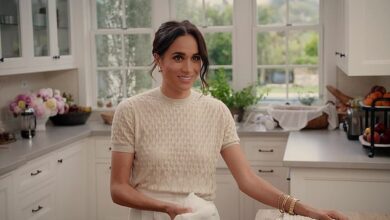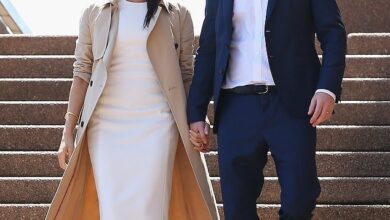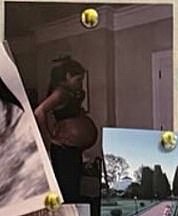Princes William and Harry seem as far apart as brothers can be – but in a London cemetery (instead of at Windsor) the previous dukes of Sussex and Cambridge lie almost side by side
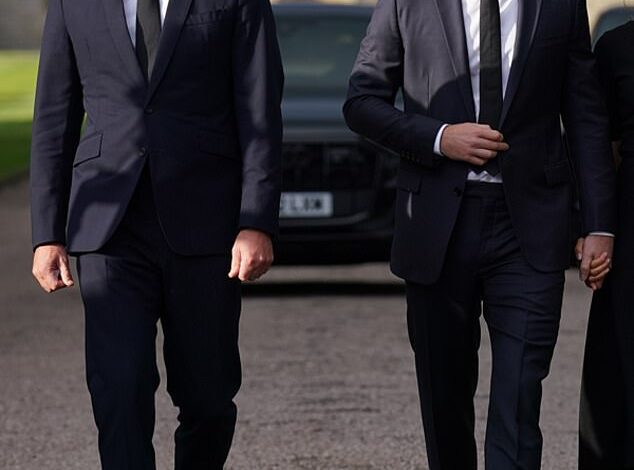
Today, princes William and Harry seem as far apart as brothers can be – living on different continents, barely communicating, and separated by a great divide in the Royal Family.
This rift was on full display when Harry returned to the UK for the Invictus Games ten-year anniversary this month – but never came close to meeting with his brother.
Yet, in one corner of north-west London, the immediate predecessors to the dukedoms they were given by their grandmother, the late Queen, lie peacefully almost side by side.
In an uncanny quirk of fate, the last dukes of Cambridge and Sussex before William and Harry are buried close to each other in Kensal Green Cemetery.
There, among thousands of graves across 72 acres, the Duke of Cambridge has an Egyptian-style mausoleum for him and his wife, while, only yards away, the Duke of Sussex is buried in a grand tomb.
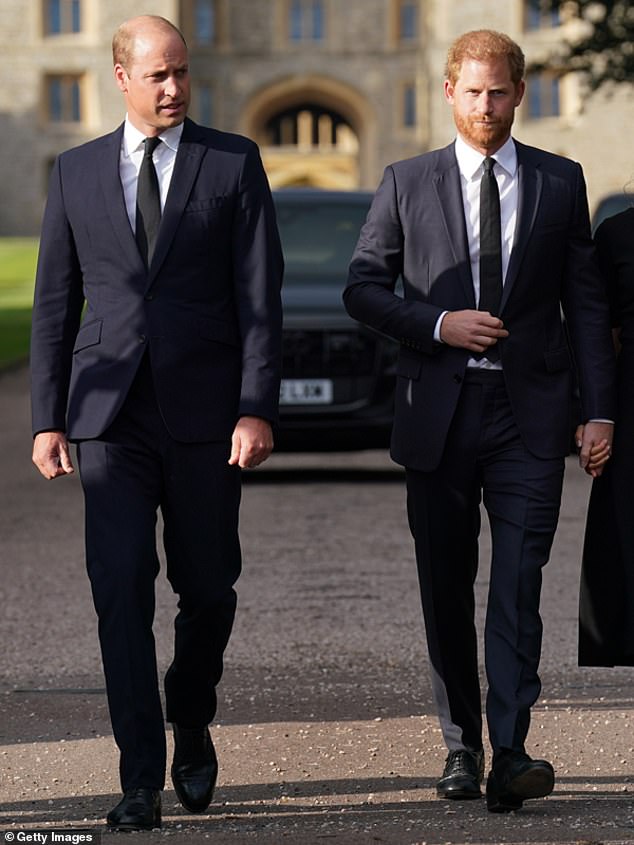
Today, princes William and Harry seem as far apart as brothers can be – living on different continents, barely communicating, and separated by a great divide in the Royal Family. Above: In a rare moment of putting aside their differences, the brothers walk side by side as they meet the public at Windsor following the death of the Queen in September 2022
Next to the latter duke lies one of his wives, whilst his sister Princess Sophia rests opposite.
Like William and Harry, both men were direct descendants of a monarch. The Duke of Sussex was the son of George III, whilst the Duke of Cambridge was the King’s grandson.
And while there are many differences between the lives of the 19th century dukes and the 21st century ones, there are also many striking similarities.
But why was it that George III’s grandson and son both ended up at a public cemetery in London, when their family were interred at St George’s Chapel at Windsor Castle, the Royal Burial Ground at nearby Frogmore, or in one of Britain’s great churches or cathedrals?
Admittedly, Kensal Green Cemetery is one of the ‘magnificent seven’ Victorian London cemeteries – along with West Norwood, Highgate, Abney Park, Brompton, Nunhead and Tower Hamlets.
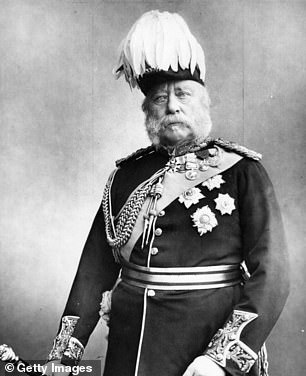
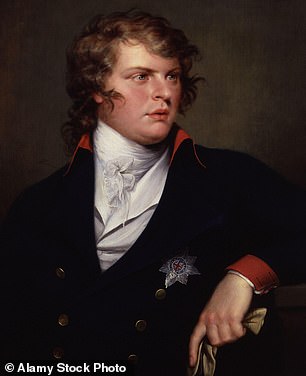
In an uncanny quirk of fate, the last dukes of Cambridge and Sussex before William and Harry are buried close to each other in Kensal Green Cemetery. Above: Prince George, Duke of Cambridge (left) and his uncle, Prince Augustus Frederick, Duke of Sussex
It contains the resting places of the likes of engineer Isambard Kingdom Brunel, playwrights Harold Pinter and Terence Rattigan, and novelists Wilkie Collins, Anthony Trollope and William Makepeace Thackeray.
But there are also 65,000 other, mainly ordinary souls in its sliver of land between the Harrow Road and Grand Union Canal.
The answer to why the royals are here tells us much about the characters of both dukes but also – just as important – the women they chose to spend their lives with.
Because while Prince George, the Duke of Cambridge, had a distinguished military career that saw him become Commander-in-Chief of the Forces, his rackety love life meant that he could not be considered for burial along with his ancestors.
He also breached the Royal Marriages Act by not seeking the approval of Queen Victoria when he married in 1847.
Meanwhile, the liberal Prince Augustus Frederick married twice, on both occasions breaching the Act. He also specified in his will that he did not want a state funeral, and so ended up at Kensal Green.
The Royal Marriages Act, which was repealed in 2011, allowed a sovereign to veto a marriage of a family member that they did not see as fit.
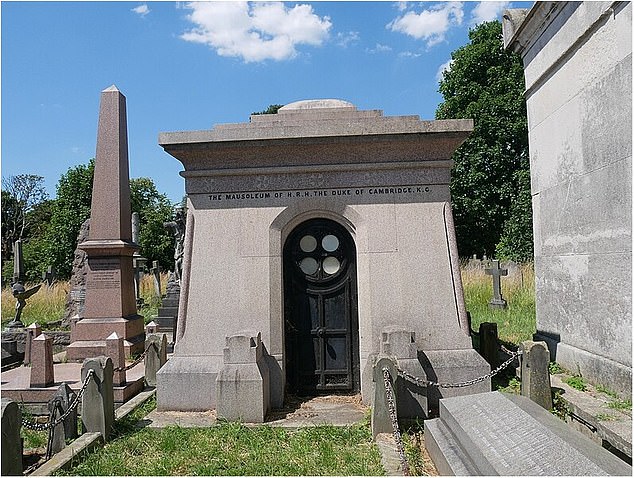
At Kensal Green cemetery, among thousands of graves across 72 acres, the Duke of Cambridge has an Egyptian-style mausoleum for him and his wife
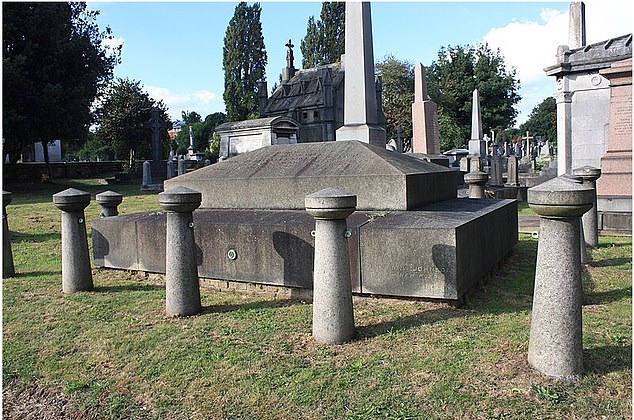
Yards away, the Duke of Sussex is buried in a grand tomb. Next to the latter duke lies one of his wives, whilst his sister Princess Sophia rests opposite
It is this legislation that, ultimately, would lead to William and Harry being given their dukedoms, because, having contravened the Royal Marriages Act, the earlier dukes were forfeiting their children’s right to inherit the titles.
With no heirs, the titles lapsed, until Queen Elizabeth II resurrected them for William and Harry’s marriages to Catherine and Meghan Markle.
One of the reasons that Prince George did not seek Victoria’s approval for his marriage – thus condemning the dukedom he had inherited from his father, George III’s son Prince Adolphus – was because of his intended’s profession. Sarah Fairbrother was, like Meghan, an actress.
However, there was more to make Sarah not obvious ‘royal marriage material’.
Apart from the fact that her father was a servant, there was the thorny issue that, by the time of her wedding, she had had four children already by three different fathers, and two of the children were the Duke of Cambridge’s.
‘That consent would never have been given for him to marry an actress with four illegitimate children (by three different fathers),’ writes family historian Anthony J Camp.
But the fathers of the two children Sarah had before her two with the duke were with men almost as notable as Prince George.
One was Charles John Manners Sutton, later the 2nd Viscount Canterbury, and the other was Colonel Thomas Bernard of the Anglo-Irish British Army, whose family seat was Castle Bernard in Ireland’s County Offaly.
When Sarah and the duke finally married, they did so at the church of St John Clerkenwell in London, with the duke describing himself in the register as ‘George Frederick Cambridge, gentleman’ and signing as ‘George Cambridge’.
As she walked down the aisle, Sarah – who had been a regular on the London stage between the 1820s and 1840s and considered one of the most beautiful women of her time – was pregnant with their third child.
But she could not have a royal title, or even call herself the Duchess of Cambridge, because her marriage was considered invalid. Instead, Sarah styled herself Mrs FitzGeorge, and the couple’s three sons, who all rose to high positions in the Armed Forces, were given that surname.

Prince George, the Duke of Cambridge, had a distinguished military career that saw him become Commander-in-Chief of the Forces
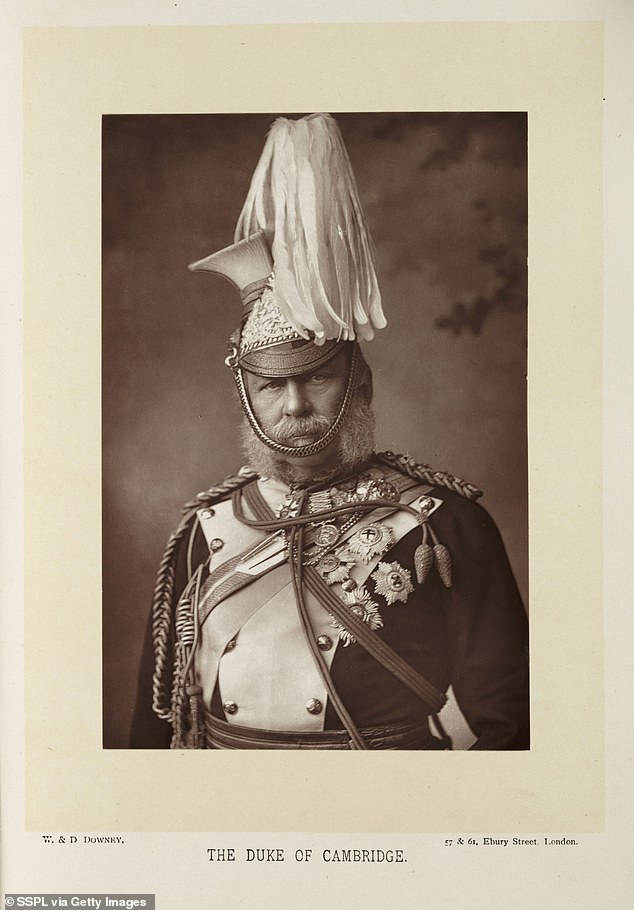
His rackety love life meant that he could not be considered for burial along with his ancestors
When she died aged 75 in 1890, she was laid to rest in the mausoleum at Kensal Green that the Duke of Cambridge had commissioned for them. However, close by was the grave of one Louisa Beauclerk, one of the women with whom the duke is said to have conducted an affair.
Only two years after his ‘marriage’ to Sarah, Louisa had become his mistress and he decided then that she would be buried near him.
Prince George died aged 84 in 1904, 22 years after Louisa and 14 years after Sarah. He is commemorated by an equestrian statue on Whitehall in London, noting his service in the Armed Forces.
In his life, the duke spoke out against arranged marriages, believing them doomed to failure. He had been groomed from a young age by his godfather, King William IV, to be a potential husband for the monarch’s niece and successor Victoria. He was even brought up at Windsor for this purpose.
However, Victoria’s maternal uncle Leopold I of Belgium objected and secured her marriage to Prince Albert. That arranged marriage, contrary to the Duke of Cambridge’s views, famously proved to be a love match.
The irony for the Duke of Cambridge was that it was Queen Victoria’s consent he needed to marry. If William IV had got his way, the duke would have been marrying Victoria herself.
Although it is odd that the graves of the dukes of Cambridge and Sussex have ended up close to each other in a public cemetery, it is somehow fitting. Especially since George III gave those titles to two successive sons born little more than a year apart.
On January 27, 1773, Prince Augustus Frederick was born and was made the first Duke of Sussex. On February 24, 1774, Prince Adolphus arrived, and was made Duke of Cambridge.
Adolphus had a distinguished military career and his marriage to Princess Augusta of Hesse-Kassel received the royal thumbs-up, so the title was carried on by their son, Prince George.
However, from early on, Prince Augustus was marching to a different beat to the rest of his siblings. He was the only surviving son of George III not to pursue an Army or Navy career, and he supported causes such as the lifting of restrictions on Catholics and Jews, and Protestants who had separated from the Church of England.
Although he was sent to study at the University of Gottingen in Germany with his brother Adolphus, the asthmatic Augustus did not have the customary military training in Hanover that his sibling did.
While travelling in Italy, he met Lady Augusta Murray, daughter of the Scottish 4th Earl of Dunmore, and they were married secretly in Rome on April 4, 1793, in hotel lodgings, by a rogue Anglican cleric from Norfolk.
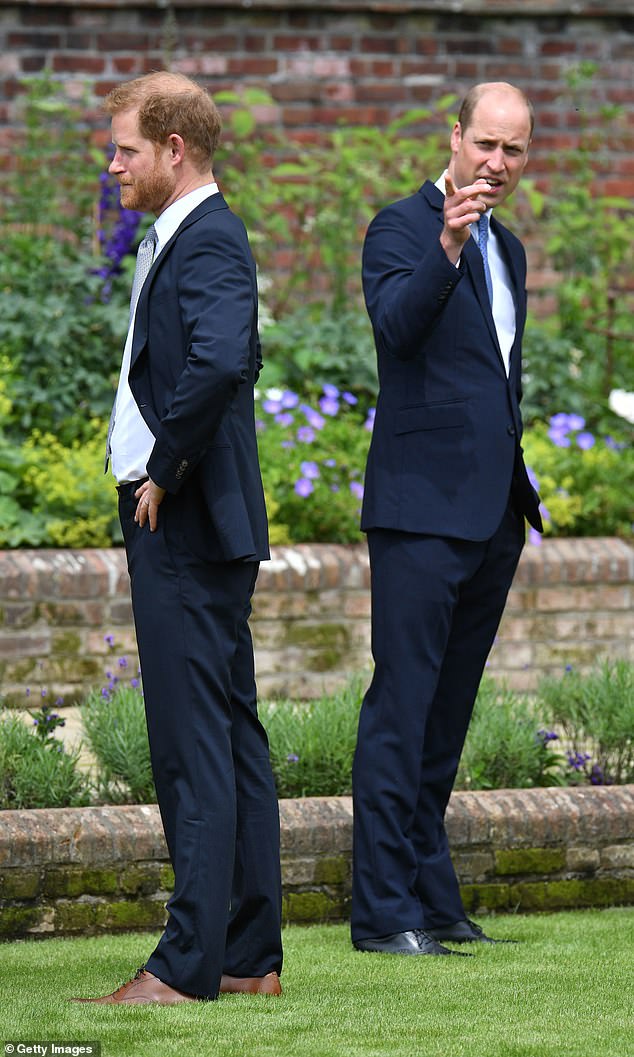
Prince Harry, Duke of Sussex and Prince William, Duke of Cambridge during the unveiling of a statue they commissioned of their mother Diana, Princess of Wales, in the Sunken Garden at Kensington Palace, 2021
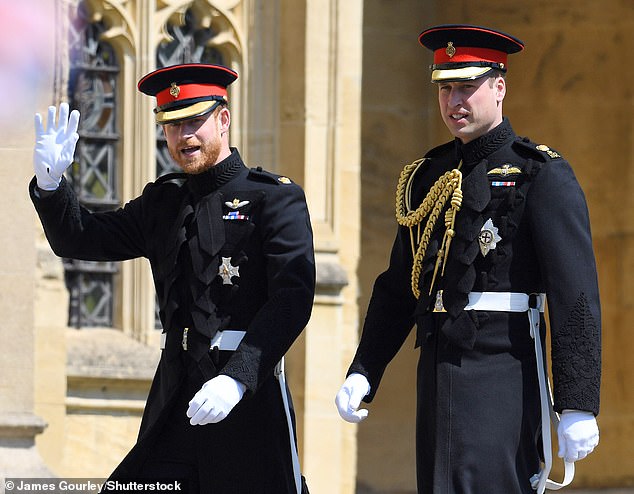
Prince Harry walks with his brother on his wedding day at Windsor in May 2018
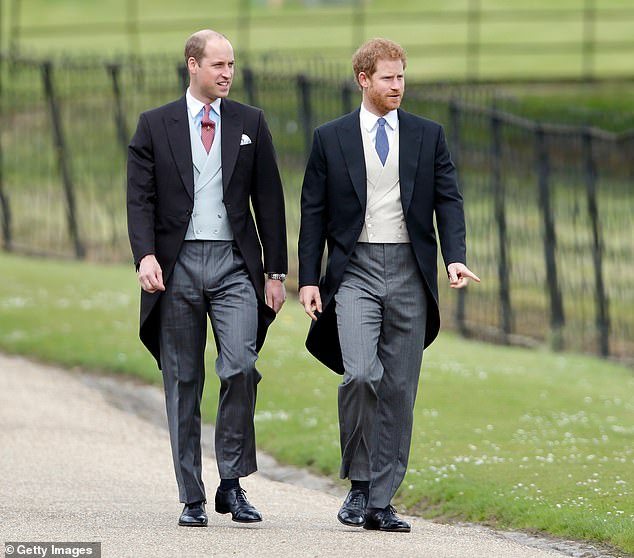
Prince Harry and William walk side by side as they attend the wedding of Pippa Middleton in 2017
George III subsequently sent a minister to escort him back to London, whereupon the couple married again, without revealing their full identities, at St George’s church, Hanover Square. And just as with Prince George’s marriage, the bride walked down the aisle pregnant, particularly heavily.
In 1794 the marriage was declared null and void. Augustus was ordered out of the country by George III and took up with an Italian opera singer called Giuseppina Grassi in Naples. Like his nephew the Duke of Cambridge, Augustus had an unfaithful streak.
Meanwhile, Augusta, who was told to stay back in Britain, had a relationship with her cousin, Lord Archibald Hamilton. The Sussexes briefly reunited, and she gave birth again, but in 1801 Augustus received a parliamentary grant of £12,000 and the couple separated.
Augustus continued with his interests – he became a patron of the Jews’ Hospital and Orphan Asylum but also the Grand Master of the United Grand Lodge of England and founded the Royal Masonic Benevolent Institution.
And after Augusta died in 1830, the duke married for a second time. Again, he did not seek royal approval. Such was his disdain for royal protocol by now.
His new spouse was Lady Cecilia Letitia Buggin, whose father was a member of the Anglo-Irish aristocracy. However, although the couple lived in Kensington Palace, she was never accepted as a full royal in regal circles.
The duke died in 1843, aged 70, and, in accordance with his will, was buried at Kensal Green. Lady Cecilia, who outlived her husband by 30 years, later joined him in Kensal Green. His sister Princess Sophia, who died in 1848, lies opposite him in accordance with her wishes.
She died in 1848 and had specified that she wanted to be buried near him rather than at Windsor. Like the duke, scandal shrouded Sohpia’s life. It was alleged she had given birth to an illegitimate child in 1800.
Despite his unorthodox royal life, the duke did seem popular. He was a favourite uncle of Queen Victoria and even gave her away when she married Prince Albert. He was also noted for his campaigning against the slave trade and for reform of Parliament.
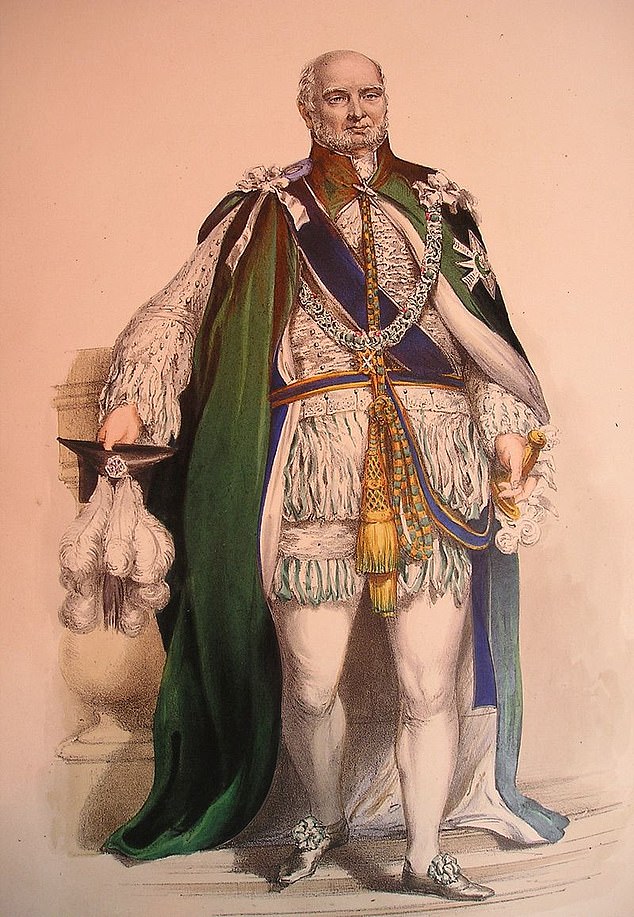
The Duke of Sussex died in 1843, aged 70, and, in accordance with his will, was buried at Kensal Green
The Times wrote on his death: ‘No death in the royal family short of the actual demise of a monarch could have occasioned a stronger feeling of deprivation.’
Prince Harry’s son Archie is likely to inherit his father’s Duke of Sussex title when he dies. Given the twists his life has taken, who knows where Harry will be buried.
Ironically, Frogmore Cottage, where he and Meghan lived before moving to America, is next to the Royal Burial Ground at Windsor, which his predecessor eschewed as a possible resting place because of his marriages.
Meanwhile, William, now Prince of Wales, will see his Duke of Cambridge title revert to the Crown when he ascends the throne. It will then be available to be bestowed on someone else.
When the time comes, that figure will be hoping that their path in life differs from the somewhat chequered footsteps of the 19th century duke.


